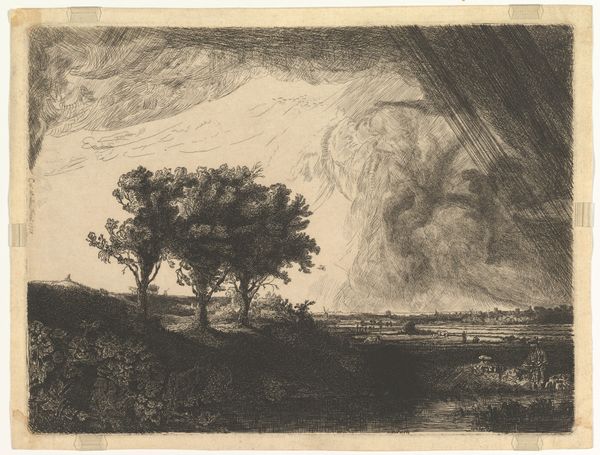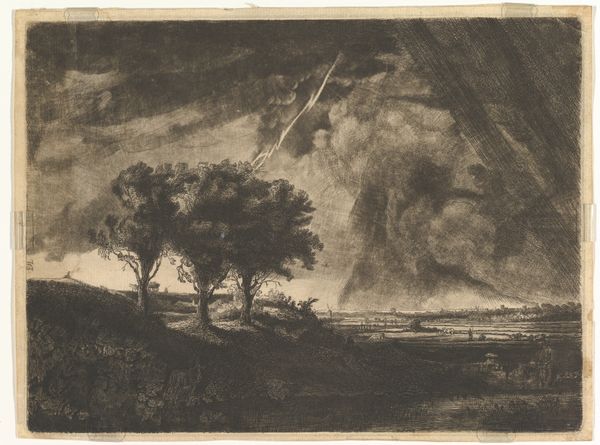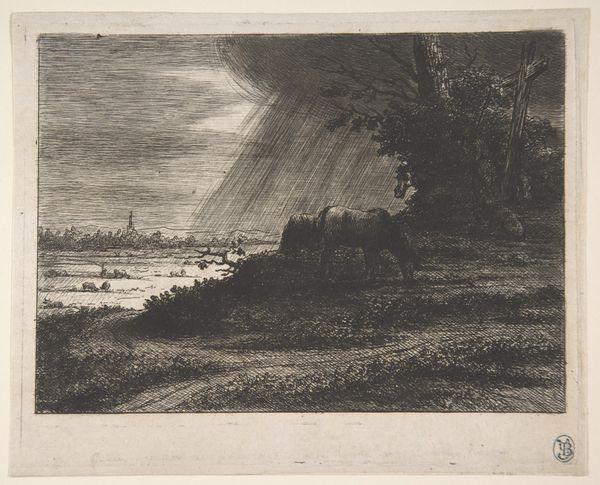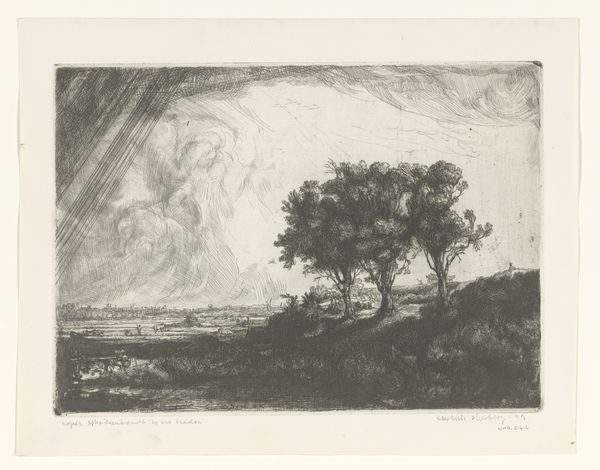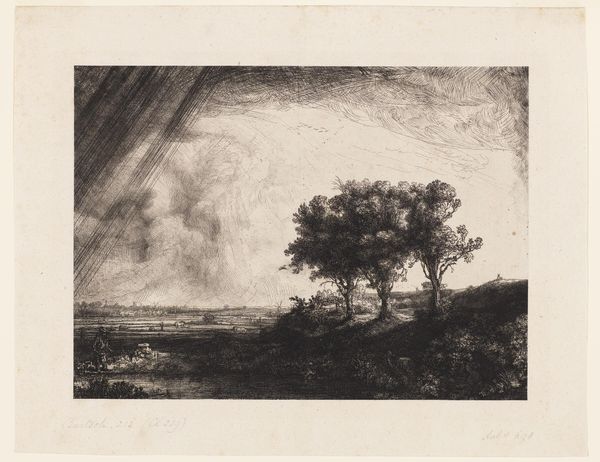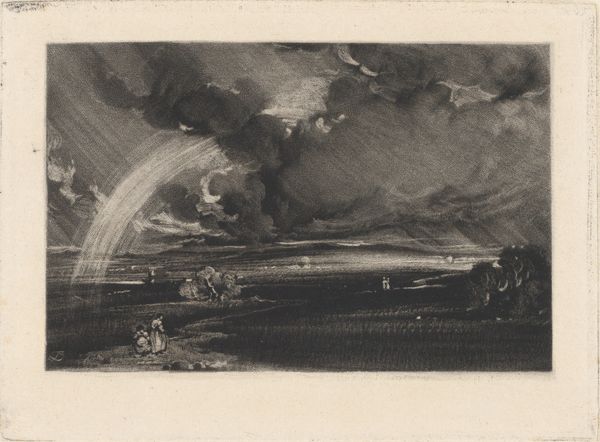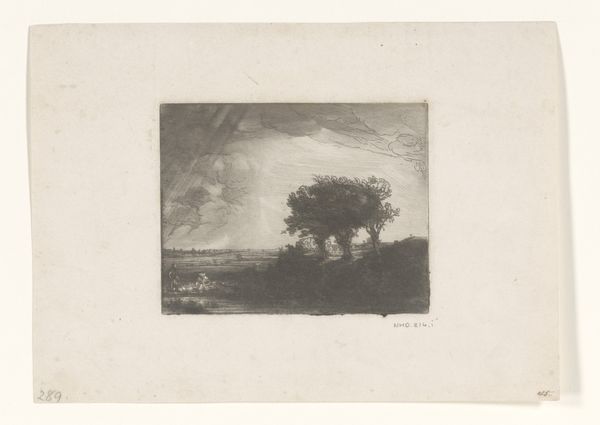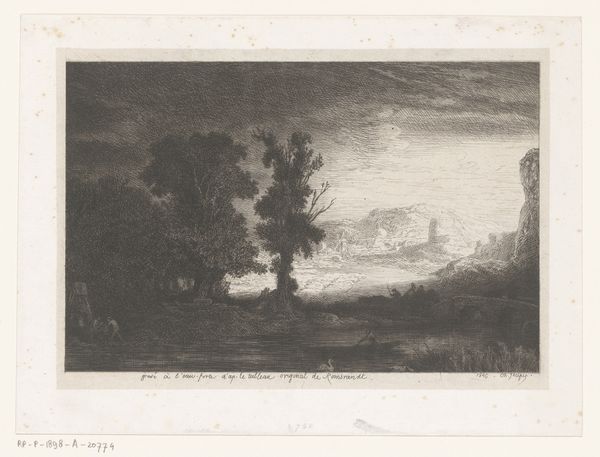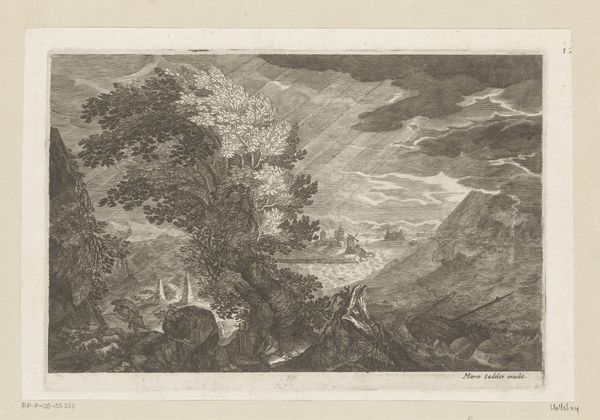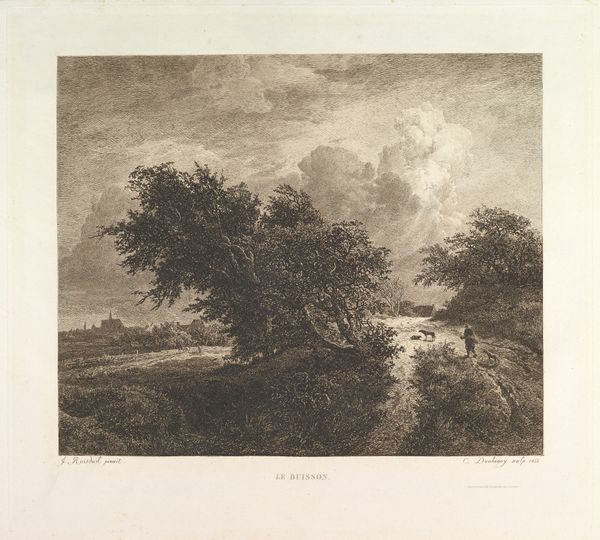
Copyright: Public Domain
Editor: This is *The Three Trees*, an 18th-century etching by James Bretherton. It’s such a dramatic landscape. The sky feels so turbulent, almost oppressive, yet there's this resilience in the trees standing firm. How do you interpret this work? Curator: This piece resonates deeply when considered through the lens of environmental and social vulnerability. The Romantic era was a time of immense social upheaval and industrial change, wasn't it? So, when you look at the way Bretherton composes the landscape, with this intense contrast between light and shadow, how do you think that reflects the anxieties of the period? Editor: It feels like a visual representation of the era’s turmoil and perhaps, the fragility of nature itself amidst that rapid change. Curator: Precisely! Consider the sky as a metaphor for the societal and political storms brewing at the time. Etchings, like this one, were often accessible to a wider public. Do you think it allowed for democratized reflections on land ownership and access during early capitalism? Editor: That’s a really interesting point. I guess I hadn't thought about the impact of the medium itself as playing a role in social discourse. Curator: These prints can speak to class dynamics by depicting idealized, romanticized rural settings versus the industrialized city, furthering existing narratives of urban decay and societal transformation. Considering our present climate crisis, what do you make of its historical messaging and potential relevance today? Editor: It’s like it foreshadows the consequences of unchecked progress and environmental degradation. I definitely see a lot more in this work now! Curator: Agreed, these historical contexts provide depth, reminding us to approach artworks as complex sites where the personal and the political intersect.
Comments
No comments
Be the first to comment and join the conversation on the ultimate creative platform.
